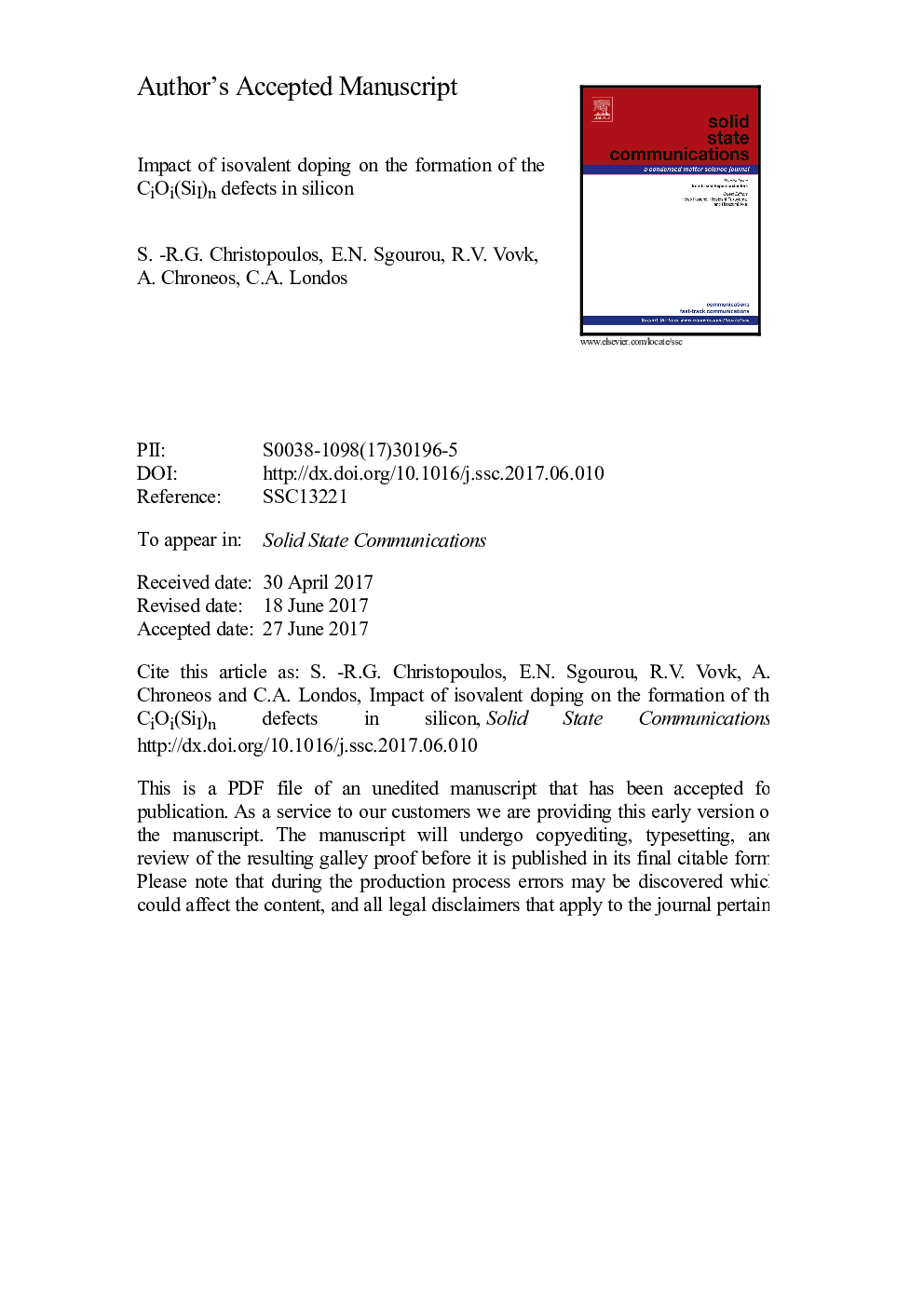| Article ID | Journal | Published Year | Pages | File Type |
|---|---|---|---|---|
| 5457150 | Solid State Communications | 2017 | 11 Pages |
Abstract
It has been determined that carbon-oxygen-self-interstitial defects in silicon (Si) can influence the operation of devices through the concentration of intrinsic point defects. Doping with larger isovalent dopants such as germanium (Ge) and tin (Sn) can impact the formation, energetics and structure of defect clusters in Si. In the present study we use density functional theory calculations to gain insights on the formation and stability of the CiOi(SiI)n (n = 0, 1, 2) defects in Si doped with Ge or Sn. It is calculated that the CiOi(SiI)n defects will preferentially form away from the oversized dopants. This result for the interstitial clusters is opposite to what is expected for vacancy-containing clusters which strongly associate with oversized dopants.
Related Topics
Physical Sciences and Engineering
Materials Science
Materials Science (General)
Authors
S.-R.G. Christopoulos, E.N. Sgourou, R.V. Vovk, A. Chroneos, C.A. Londos,
